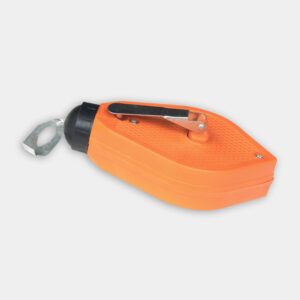We may be compensated if you purchase through links on our website. Our team is committed to delivering honest, objective, and independent reviews on home products and services.
Project details
Skill
Cost
Estimated Time
A brick patio can transform your backyard, providing a space for both relaxation and entertainment. To help you create your own, This Old House landscape contractor Roger Cook will demonstrate the key steps in building a brick patio and offer some helpful tips in this comprehensive guide.
Planning Your Brick Patio
Carefully plan your patio before you begin construction. Making your decisions before you pick up a shovel will make the project go much more smoothly. Here are the big ones you’ll need to make.
Tools You’ll Need
You may want to rent a plate compactor if you have a large amount of earth to flatten.
Choosing the Location
For some homes, the best location for a patio will be obvious: right outside the back door. However, not all homes and yards are the same, and you may get more enjoyment out of your patio by choosing a less-obvious spot. Here are some factors to consider.
- Proximity to your house
- Sun exposure throughout the day
- Drainage patterns, to avoid water pooling
- Views from the patio area
- Privacy from neighbors
Determining the Size and Shape
A simple rectangular patio isn’t the only option. A circular or L-shaped patio may better suit the space’s dimensions. Or you can always go freeform, choosing your own shape.
Selecting Materials and Patterns
Choose your brick pavers based on style, durability, and budget. There are various options available, each offering different aesthetics and longevity. These include:
- Clay bricks for a traditional look
- Concrete pavers for versatility
- Natural stone for a rustic appeal
- Permeable pavers for eco-friendliness
Once you’ve chosen your pavers’ material and shape, give some thought to the pattern as well. Cook chose a classic running bond pattern in the video above, where each row is offset by half the length of each brink. However, you have plenty of other choices, including:
- Stacked bond: Also called jack-on-jack, bricks sit in simple, perfectly aligned rows and columns. This is not commonly recommended for patios, since the joints aren’t staggered and the pavers may shift.
- Herringbone: Bricks sit at right angles to each other, creating a zig-zag
- Basketweave: Bricks are grouped in pairs, set in alternating squares of two vertical bricks and two horizontal bricks.
- Half-basketweave: Pairs of horizontal bricks alternate with single vertical bricks.
- Pinwheel: Larger squares are created by arranging four bricks around a half-brick.
Note that some patterns will require you to cut more bricks into shape than others. This increases time and material costs, so take that into account.
Estimating Costs
An accurate estimate may be the most important factor to staying within budget. We recommend building in an extra 20% to account for possible overage costs. For a brick patio, consider expenses such as:
- Material costs: Typically, this includes bricks, sand, base material, and screed rails.
- Tool rentals: You may need a plate compactor and masonry saw.
- Additional expenses: Safety gear and sealant is a must, and depending on the look you’re going for, you may need edging, as well.
Patio Site Preparation
If you don’t take the time to carefully clear and grade the ground first, bricks are more likely to shift or crack over time. Here’s how to get the site ready.
Removing Existing Materials
Begin by clearing the area of any existing structures or vegetation. Remove old bricks, paving stones, and about 7 inches of soil from the designated patio area. This will provide a fresh, uniform base for your new patio.
Grading and Compacting the Soil
Grade the area to create a level surface, then use a gas-powered plate compactor to tamp down the ground. Creating a solid foundation is crucial for preventing future settling and unevenness. At this point, you may also want to set up a tarp overhead if rain is in the forecast.
Installing a Base Layer
Spread a 2-inch layer of graded base material over the compacted soil. This material, which ranges from three-quarter-inch stone to stone dust, provides excellent drainage and stability. Compact this layer thoroughly with the plate compactor to ensure a firm base.
You may need to add extra base material if the ground is unstable or large voids need filling. Aim for a total base depth of about 4 to 6 inches, especially for areas with heavy foot traffic or patio furniture.
Creating a Level Surface for the Brick Patio
To achieve professional-looking results, you’ll need to smooth and even out the surface before you lay a single brick.
Setting Up Guide Lines
Stretch nylon lines across the patio area, tying them to stakes and positioning them three inches above the graded base surface. These lines will serve as a reference point for the final patio height and ensure a consistent level throughout the area. Measure in multiple spots to check for consistency.
Installing Screed Rails
Place steel pipes, known as screed rails, 2 inches below the nylon lines. Screed rails act as guidelines for creating an even sand layer beneath the pavers.
Spreading and Leveling Sand
Spread a layer of sand over the entire area. Pull a length of board along the rails to remove excess sand and create a smooth, level surface. Fill in any low spots and repeat the leveling process as necessary to ensure the surface remains even.
Rechecking Levels
Take your time screeding the sand layer — any inconsistencies here will be magnified when you lay bricks on top of it. After leveling the sand, recheck the grade using a long board and a spirit level. This will help you spot any low or high spots that need attention before laying the pavers.
Laying the Brick Pavers
With a level base prepared, you can begin laying the brick pavers to create your patio surface.
Starting the Pattern
Begin in one corner of the patio, setting the first paver in place. Always drop the pavers into place rather than sliding them, which can disturb the sand bed. This method helps maintain the integrity of the sand base so you don’t need to re-level.
Continuing the Pattern
Work your way across the patio, maintaining consistent spacing between pavers as you lay your chosen pattern. Patterns with staggered joints like a running bond, half-basketweave, or herringbone are often the best choices for applications like patios where the bricks aren’t secured with mortar.
Cutting Pavers to Fit
Nearly all patterns require you to cut some bricks into shape. Measure first, then use a masonry saw to cut pavers as needed to fit around edges or obstacles. Always wear appropriate safety gear when cutting bricks to prevent injuries and ensure clean cuts.
Adjusting Pavers
Check your work. As you lay the pavers, periodically evaluate for level and alignment. Make adjustments as necessary to maintain a consistent pattern and level surface.
Brick Patio Finishing Touches
The final steps in building your brick patio involve securing the edges and locking the pavers in place. These steps help ensure the longevity and stability of your patio.
Installing Edging
Place plastic edging around the perimeter of the patio to contain the pavers and prevent shifting. Secure the edging with non-galvanized spikes, which will rust over time and provide a better grip in the soil.
Filling Joints with Sand
Spread a half-inch layer of sand over the entire patio surface. Use a push broom to sweep the sand into the joints between pavers. This process helps lock the pavers in place and creates a uniform surface.
Compacting the Surface
Run the plate compactor over the entire patio surface. This vibrates the sand deep into the joints, locking the pavers in place and creating a stable surface. Reapply sand and compact as necessary to fill any remaining gaps.
Final Inspection
Perform a final inspection to ensure all pavers are properly seated and the surface is level. Any problems now will get worse over time. Address any issues before the sand fully settles to maintain a clean and professional finish.
When you’re satisfied, give your new patio a final sweep to remove excess sand. If you wish, you can apply a coat of brick sealer to help lock out moisture and stains.
Patio Maintenance and Care
To keep your new brick patio looking its best, regular maintenance helps preserve its appearance and functionality.
Cleaning
Sweep the patio regularly to remove debris. Occasionally, use a garden hose to clean the surface more thoroughly. This helps remove dirt and prevents moss or algae growth, keeping the patio safe and attractive.
If you do get moss, algae, or stains, you can use a pressure washer on a low setting. It’s also a good idea to scrub the pavers with dish soap and water, white vinegar, or an eco-friendly all-purpose cleaner. Use a bristle brush to get into the crevices. If there are oil stains, you’ll need a specialized oil remover.
Repairing
Address any loose or sunken pavers promptly to prevent further damage. Lift the affected pavers, add or remove sand as needed, and reset them. You may need additional edging to keep the other pavers in place as you work.
Sealing
Even if you applied sealer initially, continue to reapply it every few years as the manufacturer recommends. Sealing helps maintain the color and integrity of the bricks, ensuring your patio retains its beauty for years.
Film-forming sealants provide a glossy or semi-gloss finish and extra protection but need to be reapplied more often. Non-film-forming sealants last longer and have a matte finish. Either way, if the pavers are sealed, your patio will be easier to clean.
Seasonal Maintenance
In regions with freezing temperatures, ensure water doesn’t collect in the joints, which can cause frost heave and damage the pavers. Brush away snow and ice and avoid using de-icing salts that can degrade the bricks.
Our Conclusion
The key to creating an attractive, level brick patio is site preparation. This does require substantial physical effort, but it is worth taking the time to start with a level surface. With dedication and the right approach, your brick patio will become a cherished part of your outdoor environment, perfect for hosting gatherings, relaxing in the sun, or enjoying a quiet evening under the stars.









